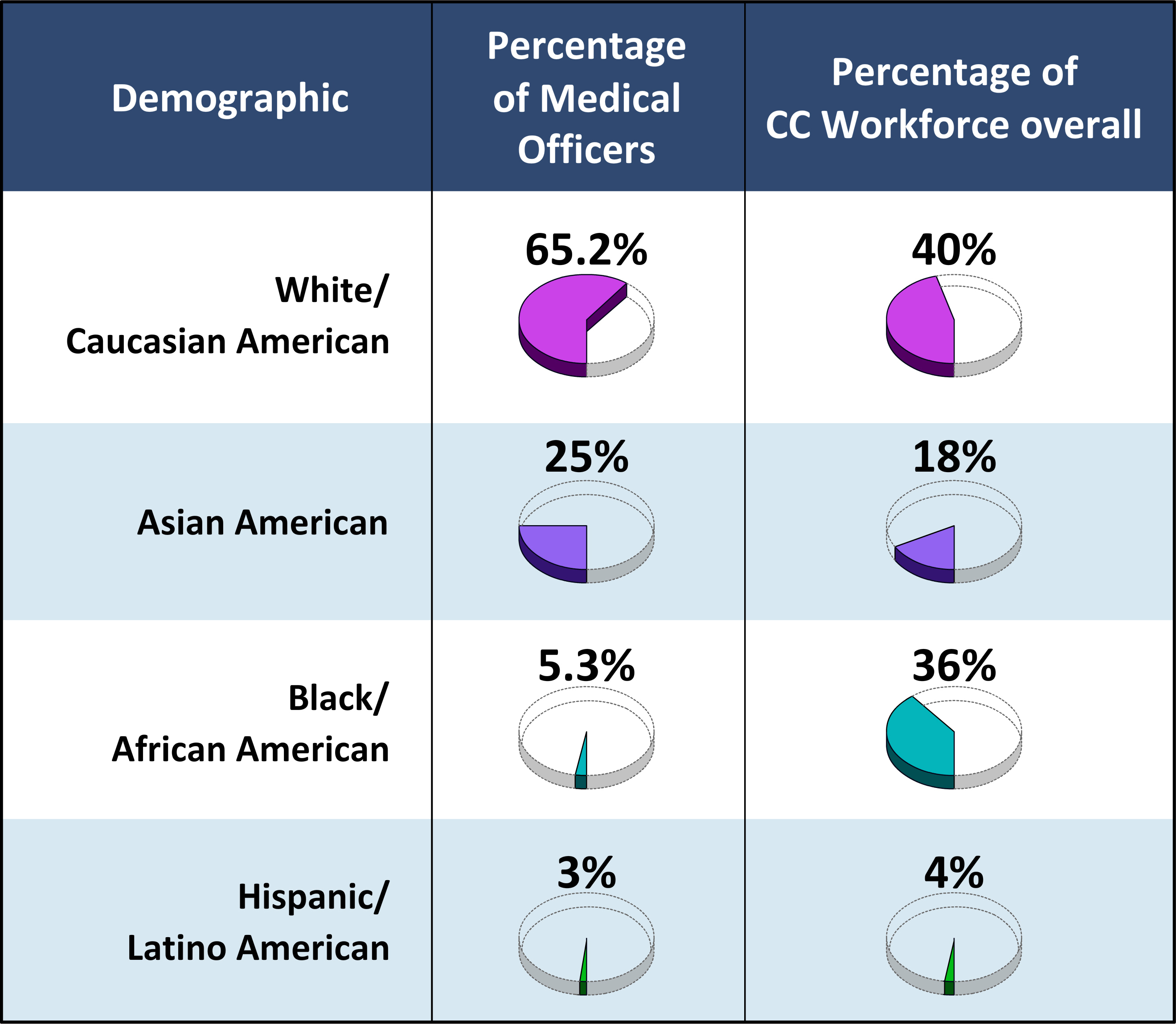Hospital CEO maps out diversity and equity action plan
"Passion has to be transformed into concrete action"

Almost 2,000 federal staff work in the Clinical Center, and how they feel about their workplace matters. At his April Town Hall, Clinical Center CEO Dr. James Gilman discussed some of the positives, challenges and opportunities ahead for the workforce.
To understand any issue, it always helps to get to the facts of the matter. To do this, Dr. Gilman walked through the hospital's workforce numbers, broken down by race/ethnicity.
Overall, the numbers indicate a diverse workforce in the Clinical Center. But hidden in those stats are some issues of equity.
"One of the insights that came from the demographic data is, like much of the NIH, we have an under-representation problem in terms of Hispanic/Latino staff members. We have far fewer than the racial and ethnic mix in the area where we live and work would suggest," said Gilman.
Another issue is diversity decreases – particularly for the Black/African American population – as one looks at the senior General Schedule level and scientific/medical positions. The General Schedule (GS) classification and pay system covers the majority of civilian white-collar federal employees in professional, technical, administrative and clerical positions.
"There may be good diversity amongst Clinical Center staff, but there's not equal representation because there isn't equal representation at all levels," stated Gilman.
"[H]aving more diverse leadership and more diverse representation related to our core business, which is biomedical science – including those who take care of patients in the Clinical Center – that would make our workplace better and that would make us a better place to do our core mission of clinical research."
Dr. Gilman also shared the data collected when the Clinical Center conducted its Diversity, Equity, Inclusion and Accessibility (DEIA) Engagement Survey staff survey in the Fall of 2021. The survey was completely anonymous and was administered by an outside third party called Snowbird Consulting. Over 700 members of the Clinical Center staff shared their thoughts out of 1,800 potential participants.
The survey results indicated high levels of engagement among staff and high levels of inclusion, although the results varied based on the racial background of the people who completed the survey.

One additional insight was that 16% of all survey respondents disclosed having a disability, compared to seven percent reported to the NIH's Office of Equity, Diversity and Inclusion (EDI). Dr. Gilman drilled down on this discrepancy.
"There are a lot of people who feel that they have some sort of disability…and when questioned about why they failed to disclose it they felt that it had a career impact: that their assignments would not have been as good, that their opportunities for promotion and advancement or receiving an award would not be as good if they had disclosed [their disability]," said Gilman.
He stated that there are protections for staff with disabilities and that there is an opportunity to strengthen the education of the hospital's supervisors to help ensure that they accommodate and not penalize staff with disabilities.
"There's a lot of work that's been going on. A lot of work and a lot of passion. And that passion has to be transformed into concrete action - things we can actually do in order to make a difference," said Gilman.
After sharing the data, Gilman mapped out a plan of action, which includes:
- Addressing hiring gaps in senior positions
- Creating a written policy for hiring and advancement in the Clinical Center that hospital leadership will ensure is shared widely and followed across the organization
- The Clinical Center will work with EDI and the Office of Human Resources to ensure both applicants and selectees for senior positions are diverse
- Expanding the DEIA awards and recognition program for the Clinical Center
- Providing cash awards to all staff of a department/office that meets diversity criteria
- Engaging, recruiting and hiring from Minority Serving Institutions and Historically Black Colleges and Universities
- Making equity a foundational consideration in recognition, retention and development programs at the NIH Clinical Center
"We are not going to solve this today, this week, next week, month or year – but it is a good start. And it will be a journey – we are committed to stay on it," said Gilman.
The Clinical Center depends on a diverse workplace that embraces a culture of teamwork and collaboration. For more information on the Clinical Center's Diversity, Equity, Inclusion and Accessibility committee and hospital equity initiatives, please visit https://intranet.cc.nih.gov/deia (Staff only)
Where we want to go
Diversity
The Clinical Center will strive to ensure representation of all underrepresented groups at all levels and in all common job series at the hospital.
Equity
The Clinical Center will develop and utilize transparent processes for hiring, advancement, awards, rewards, incentives, training, travel, educational opportunities and workplace flexibilities.
Inclusion
The Clinical Center will assure the development of programs designed to enable those from underrepresented groups to compete on a more equal basis with those from overrepresented majorities.
Accessibility
The Clinical Center will continue to instill a culture of acceptance of individual differences, including those physical, emotional and mental conditions that may require accommodation(s) in order for the staff member to perform at their best.
- Donovan Kuehn